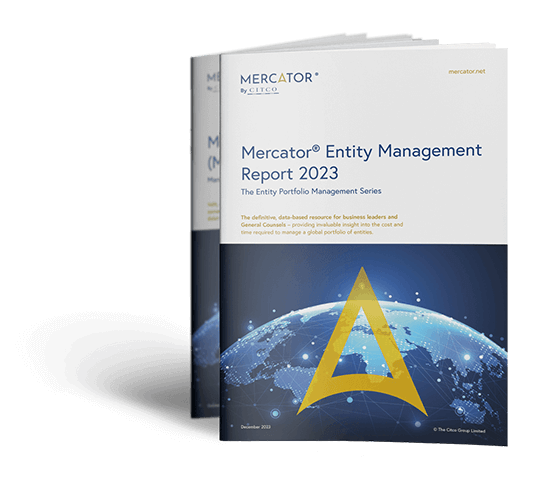The information contained in this document is marketing material and for informational purposes only. The information contained in this document is presented without any warranty or representation as to its accuracy or completeness and all implied representations or warranties of any kind are hereby disclaimed. Recipients of this document, whether clients or otherwise, should not act or refrain from acting on the basis of any information included in this document without seeking appropriate professional advice. The provision of the information contained in this document does not establish any express or implied duty or obligation between Citco and any recipient and neither Citco nor any of its shareholders, members, directors, principals or personnel shall be responsible or liable for results arising from the use or reliance of the information contained in this document including, without limitation, any loss (whether direct, indirect, in contract, tort or otherwise) arising from any decision made or action taken by any party in reliance upon the information contained in this document. © The Citco Group Limited, December 2024.
Entity Portfolio Management: The Elephant In The Room
Improving entity portfolio management (EPM) practices is a desire which many multinationals share when maintaining a truly global portfolio of entities. It’s a topic which often intensifies following the pressure of properly meeting all annual obligations in all jurisdictions. Once this subsides, in the hope that there are no negative consequences such as a missed deadline, Legal Departments look to begin unearthing potential efficiencies and opportunities to improve the overarching process. Indeed, in conversations with a number of stakeholders involved in entity portfolio management, there can certainly be room for improvement.
In many cases, the idea of outsourcing the corporate secretarial function starts to gain traction. However, as new urgent matters arise, discussions will inevitably be postponed and the project is put on the back burner. If this status quo persists and a permanent solution is undecided, then the arrival of the new fiscal year restarts the cycle, and EPM remains the elephant in the room.
How to select a partner to last
Each multinational has a unique set of needs behind its decision to centralise this function with a single service provider. For some companies, the reason might be simply generating cost efficiencies during a rough economic period. For others, it could be improving and modernsing their internal processes while gaining more control over their global portfolio of entities, among others. Nonetheless, there are two key elements that each company should take into consideration during the evaluation and selection process of a service provider: global reach and technology.
The first crucial aspect to keep in mind when choosing the right partner is their global reach. Managing a portfolio of international subsidiaries is a very complex matter. It involves coordination between different departments in several countries. It also requires being on top of changes in the local legislation that might affect the entities, as well as keeping an eye on the political situation of each country in which the company has operations. With this much complexity, a lot could go wrong. As a result, making sure that each entity is in compliance and in good legal standing in every jurisdiction can be a logistical nightmare.
In this context, the global capacity concept has evolved, requiring that the companies that intend to stand out in this sector become an actual extension of the Legal team of the multinationals they are serving in multiple jurisdictions. Current realities demand more comprehensive solutions. In other words, it is not enough just to assist multinationals with the annual obligations in several countries. It is important to go the extra mile and to have an operating framework in place to guarantee an efficient execution of the services in every country, while adopting a proactive approach to cover the client’s needs.
The second aspect to consider is the use of technology as a link between the services and their execution to provide control and transparency across the portfolio of subsidiaries. Nowadays, pretty much every EPM service provider offers some kind of software to support its operations, becoming an industry standard. Therefore, it is essential to define the areas in which the implementation of new technologies could be a true game changer for the organisation and identify where the real added value is. These areas vary according to the specific needs of each company and therefore the ability to tailor the service is far more optimum than a one size fits all approach.

